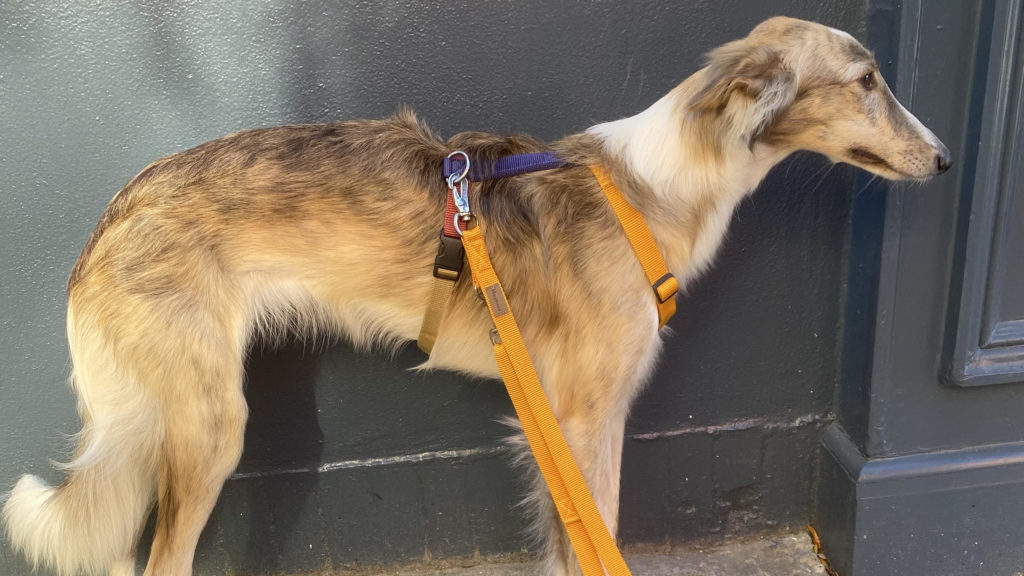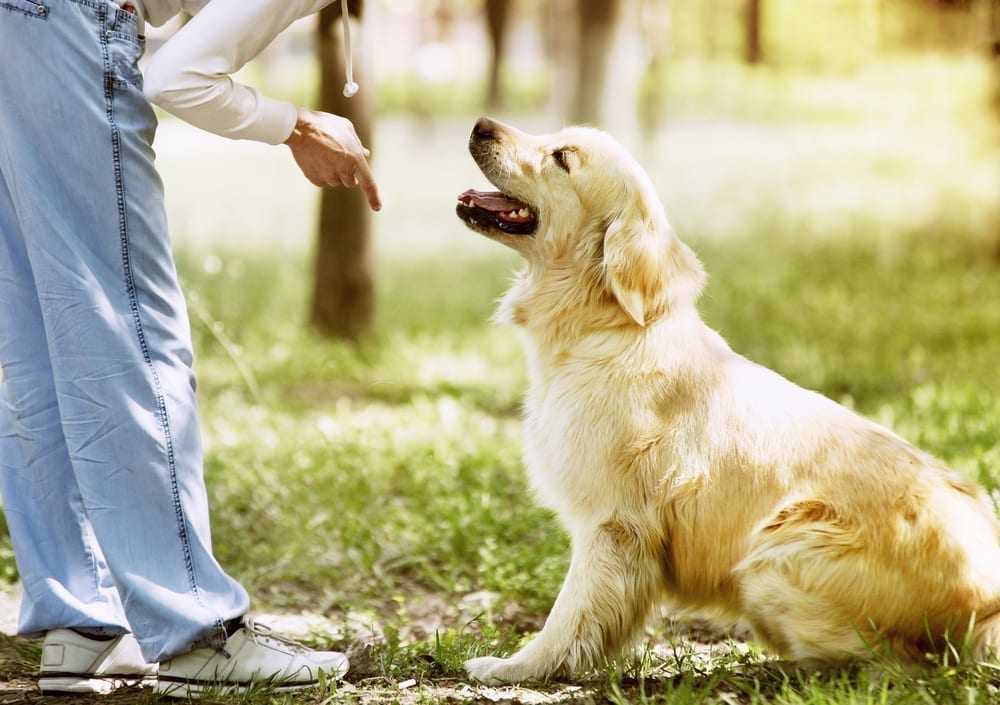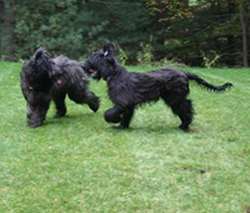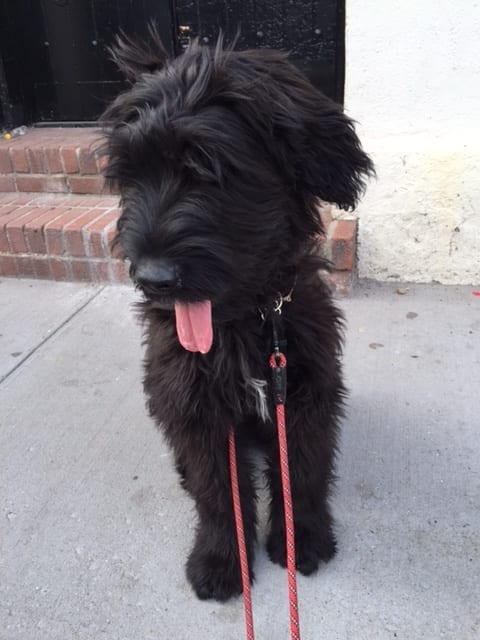Recently I learned more about the Premack principle in a webinar given by Kathy Sdao who is an admirable animal trainer.
I was interested in learning more about how I could vary my reward system in my teaching. I was familiar with the idea of consequences, of course. When the dog offers to sit in front of the door, opening the door and being allowed to walk out is a reward. Some trainers call it “real life rewards”. Grandmothers have told their kids for years: “If you eat your vegetables you get to eat chocolate cake.”
This makes sense but it is not as exciting as roast beef. It also requires a certain amount of negative reinforcement. It’s not as bad as “I will stop pinching your ear when you drop the dumbbell” but it requires the dog to perform a behavior that is LESS rewarding first.
David Premack was a professor of psychology at the University of Pennsylvania. His studies showed that if a very likely behavior is allowed to play out it will reinforce a less likely behavior. So, in practical terms that means that you can pick any old behavior, even if it is a nuisance behavior, and use it to reinforce a behavior the learner is less likely to perform. Allow the dog to engage in the most likely behavior at that moment even if it is a nuisance behavior and the less likely behavior will be reinforced and will happen more often.
Examples in the demo videos showed a dog sniffing for a mouse or rat inside a shed, being called away from the sniffing for a split second and as a reward given access to the mouse/rat sniffing again. Another video showed a dog called to come while he was chasing geese and then being allowed to chase again.
A study with autistic children showed that aberrant/stereotypic behaviors will serve to reinforce a desirable behavior. For instance, allowing the child to perform an aberrant but highly likely behavior will reinforce a much less likely behavior like speaking or eating. Those behaviors are unlikely behaviors in autistic children.
But, you might possibly ask, since practiced behaviors are self reinforcing, won’t practicing the aberrant behavior make that behavior more likely in the future? The answer is NO!!
That is the brilliance of the Premack Principle.

Zeldi is my working laboratory puppy. I decided to give this a try. Zeldi loves to rip paper and fabric. One of my greatest accomplishments with her is that she does not pick up my neighbors’ newspapers in the hallway and rip them to shreds. She now pointedly looks at those papers as we approach and then turns her head towards me as if saying: see.. I am not touching it! Which we accomplished after lots of rewarded repetitions of ” leave it”!. I might add that at this point the accomplishment of not touching those newspapers is self rewarding so I only have to acknowledge it every once in a while to keep the behavior alive, so to speak. But I do not have to remind her to leave the tempting newspapers where they are.
But that does not mean that she would not love to rip the paper to shreds!
So I decided to experiment with the Premack Principle. I confess I was quite nervous about it. The challenge to the teacher (me) is to take advantage of an opportunity for the learner (Zeldi) to engage in a behavior that is the most likely to happen in the current context and use it to get a a different and less likely behavior.
This is a particular challenge for me. I am almost hard wired to prevent unwanted behaviors from happening altogether.
So with significant trepidation but intellectually relying on the information that I would not reinforce the nuisance behavior but use it to my advantage only, I set out to try this out in the distracting environment of the sidewalks of Chelsea.
As soon as I saw a discarded newspaper blowing around I slowed down to show Zeldi that this was not a “leave it” context and sure enough she pounced onto the paper with great gusto and started to rip it to shreds. I waited until I felt that Zeldi might be able to respond to an utterance of mine. It took a couple of tries but then she actually looked at me and I congratulated her and made it clear she could go back to ripping. I really did not ask her for any particular behavior, just a brief moment of attention to me and eye contact. When I deemed the exercise over I gave her a food treat and we moved on.
Over the course of a couple of days this got a lot easier for her and I decided to reinforce a specific behavior, which I decided would be ” sit”.
So the game is: let her do something she really likes (like pull the velcro on my sneakers after I leash her up) and then I ask for a sit. She now does that much, much faster and so much more reliably and remains in “sit” when dogs come by, when the elevator doors open, when I open my apartment door and also after she plays wildly with another dog. That is very satisfying for me, since she has enormous enthusiasm but can channel that enthusiasm very quickly now.
I am so pleased with the progress she has made since we started this experiment.
Of course I will continue to use food and toy rewards. But I am inspired to use the environment and even manipulate the environment to help get reliable behaviors in distracting circumstances.













